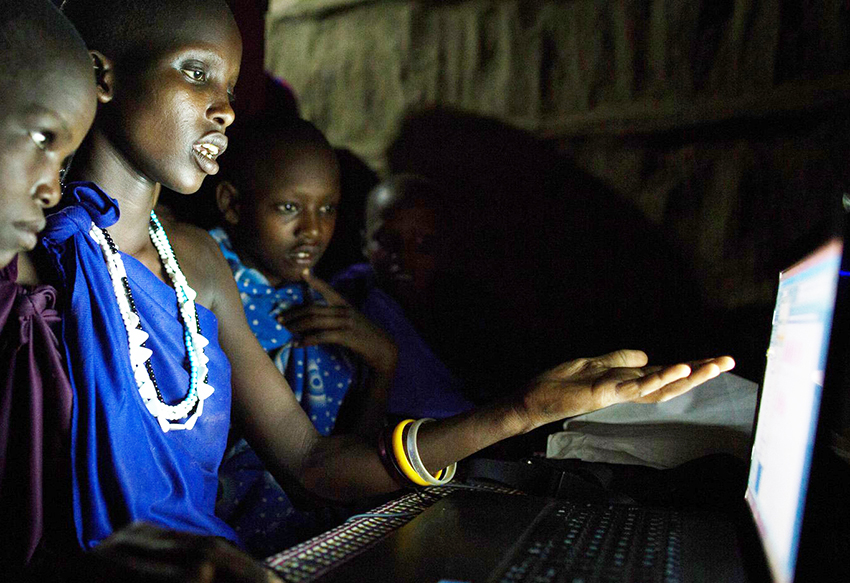
Photo Credit: Morgana Wingard, USAID/(CC BY-NC 2.0)
Connectivity transforms lives. Access to a mobile network, including the internet or a mobile phone, opens the door to information, and information enables people to discover their full potential. Without connectivity, people are in the dark, closed off from opportunity. Yet, more than 4 billion people remain unconnected to the internet, and 20 to 40 percent of the poorest billion people are out of reach of even very basic mobile networks. Many of these people live in remote, hard-to-reach locations. And, each person among the poorest billion has only US$2.25 per month to spend on mobile services.
Reaching isolated, impoverished communities is not easy. It takes a clear understanding of context and demand. New mapping tools, like the mAccess Diagnostic Tool that maps connectivity, are helping governments, private-sector companies, and nongovernmental organizations understand the context of those who are out of reach of mobile networks. These tools are shedding light on the affected areas and are helping us visualize network coverage areas, prices for services, local incomes and the numbers of individuals who are mobile subscribers. In-depth research is emerging to fill out the picture by showing who among the poorest uses phones, for what purposes, and when and where.
Stakeholders, including governments, development organizations, network operators and entrepreneurs, share the desire to understand and meet the demand for greater connectivity. Governments have a duty to empower their citizens with easily accessible, online public services and information. Network operators are interested in increasing their market share, and the gap in connectivity leaves much space for entrepreneurs to develop solutions. Development organizations are uniquely placed to coalesce stakeholders and drive action.
To connect the unconnected, more collaborative, sustainable and innovative models are needed. Share on XWhile the reliable, low-cost technology needed to build innovative, profitable and financially sustainable business models exists, collaboration is necessary to scale the technology and bring it to those who need it most. For example, a connectivity start-up in India called AirJaldi has partnered with government institutions, nongovernmental organizations and technology companies to understand its consumer base, scale its project and bring it directly to those who need connectivity most. With solar power, they extend connectivity from the existing infrastructure into rural areas that have little or no access to broadband services, thus serving more than 70,000 clients.
To connect the unconnected, more collaborative, sustainable and innovative models like AirJaldi are needed. FHI 360’s Mobile Solutions Technical Assistance and Research (mSTAR) project, through funding from the U.S. Agency for International Development’s Global Development Lab, is researching solutions by identifying alternative, last-mile, connectivity business models and constraints to investment. By identifying and promoting these promising models, we can drive private investment and build out sustainable, market-driven models so that populations can reliably and affordably connect.
With connectivity comes critical information on jobs, rights, health and businesses. A simple phone and network connection can help a farmer in a far-flung location access specialized extension services. Through a mobile phone, a woman can open her own digital bank account, which could empower her independence. A rural health clinic can connect remotely to specialists, saving patients the often costly and arduous journey to a hospital. Improved access to information helps people grow their businesses and keep their families healthy.
It is already possible to deploy commercially sustainable connectivity solutions for the world’s most marginalized people. They don’t involve flashy technology but do use practical approaches that accommodate the income levels and locations of all people, such as innovative business models and low-cost hardware. If entrepreneurs, governments, investors and development organizations work together to analyze where the market fails the rural poor and to expand their access to mobile networks and technologies, the most marginalized billion people could benefit in countless ways.
Photo credit: Morgana Wingard, USAID/(CC BY-NC 2.0)
